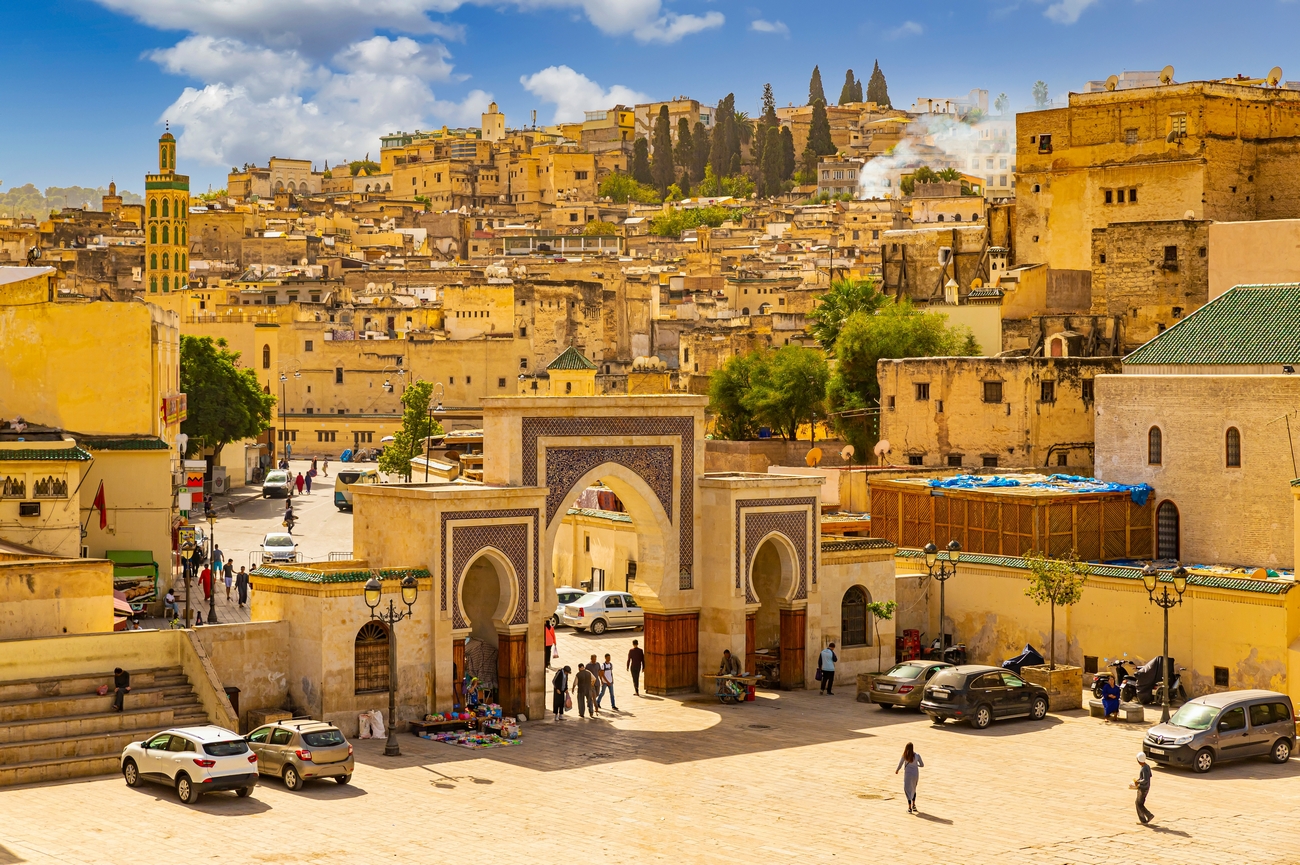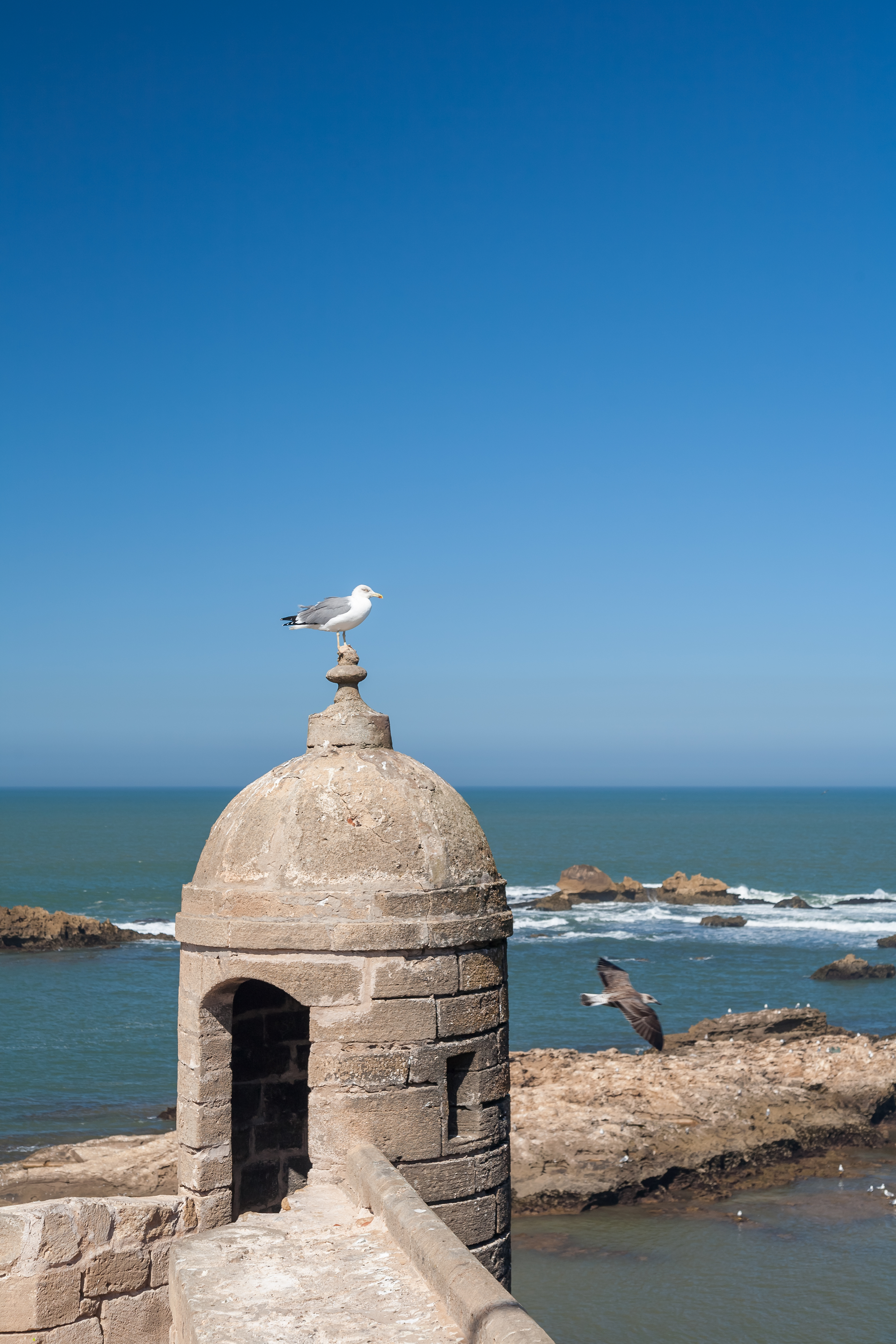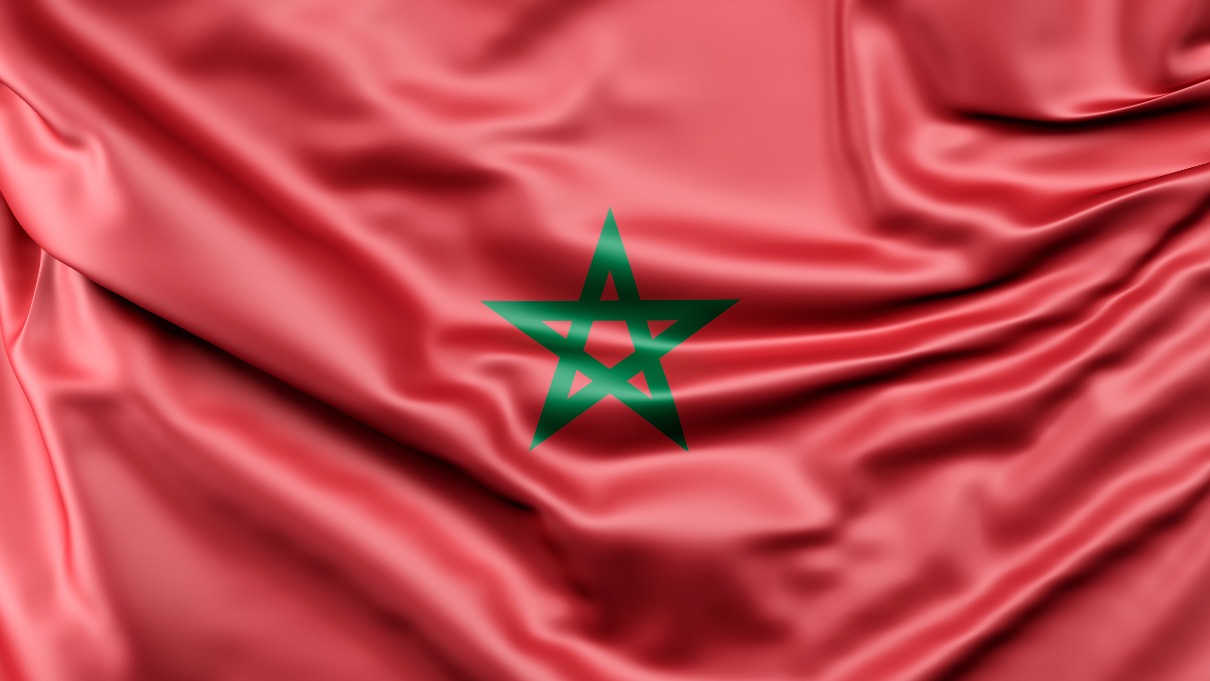Planning a trip to Morocco? Here’s everything you need to know, including:
- The best time to visit
- Top tourist attractions in Morocco
- Hidden gems worth exploring
- Bucket-list experiences
- Travel tips for Morocco
- eSIM Morocco: Stay connected with Airalo
Best Time to Visit Morocco
Spring and fall are the best times of year to visit Morocco. Travel between April and June, or from September to November, to avoid the extreme summer heat and cold winter nights. September is ideal, as fewer travelers are around, and the coastal cities have warm weather.
Try to avoid peak tourist season between July and August. This period sees an influx of international travelers, resulting in higher flight and accommodation prices. If visiting during summer, head to the coast to escape the heat and enjoy outdoor activities like hiking, surfing, and swimming.
Top Tourist Attractions in Morocco
There’s so much to see and do in Morocco, from exploring rugged mountain ranges and golden dunes to ancient cities and legendary towns. Here are some of the top places you should add to your Morocco itinerary:
Marrakech

Marrakech is where European, African, and Middle Eastern influences meet. It’s a must-see with its ancient city, UNESCO World Heritage-listed main square, galleries, and oases.
Top attractions in Marrakech:
- Marrakech Medina: A maze of narrow streets and lively markets selling everything from silver tea pots and handwoven rugs to spices and fresh dates.
- Jemaa el-Fnaa Square: A UNESCO World Heritage site that maintains 11th-century street performance traditions, including snake charmers, acrobats, fortune-tellers, and henna artists. Stay until the food stalls open in the evening to try local dishes like snail soup and meatballs.
- Majorelle Garden: A beautiful garden and home to a museum created by Jacques Majorelle in the 1920s, later home to Yves Saint Laurent. Explore 2.5 acres of gardens, a Berber Museum, and the Yves Saint Laurent Museum.
- Bahia Palace: A lavish palace decorated with intricate zellige (colored mosaic tiles) and zouak (painted wood). Wander its elegant courtyards and grand rooms.
- High Atlas Mountains: Take a day trip to Toubkal National Park and hike the High Atlas Mountains. Don’t miss the snow-covered Mount Toubkal, known as the "Roof of North Africa."
Fes

Fes is the oldest imperial city in Morocco. Spend your day wandering its maze-like streets leading to hidden squares, artisan workshops, colorful soups, and decorated riads. Be sure to visit a traditional hammam for a relaxing break after the city’s bustle.
Top attractions in Fes:
- Fes el-Bali: The world’s largest medieval city with over 9,000 alleys to explore. Find hundreds of workshops selling leather goods, copperware, mosaic tiles, and handwoven carpets.
- Chouara Tannery: The city’s largest (and most fragrant) tannery, operating since the 16th century.
- Museum of Wooden Arts and Crafts: Enjoy displays of intricate Moroccan woodwork in a beautifully restored caravanserai. Head to the rooftop café for mint tea and views of the city.
- Bou Inania Madrasa: A theological college built in the 14th century with massive copper doors and a stunning interior courtyard.
- Jnan Sbil Gardens: Beautiful gardens with shaded walkways, fountains, and birdcages that house doves and peacocks. Visit at sunset to join locals on their evening stroll.
Chefchaouen

This 15th-century town in the Rif Mountains is one of the most picturesque in the world. Known as Morocco’s "blue pearl," Chefchaouen is filled with blue hues. Wander its steep, cobblestone lanes lined with sky-blue buildings and vibrant geraniums.
Top attractions in Chefchaouen:
- Chefchaouen Medina: A traditional Moroccan town with unique Andalusian influences. Explore narrow alleyways lined with vibrant blue buildings, red-tiled roofs, wrought-iron railings, and stunning geranium plants.
- Place Outa el Hammam: A shaded square with cafés, restaurants, and the Grand Mosque. A perfect spot for people-watching.
- Faran Bab al-Ain: A traditional bakery where locals still prepare bread and pastilla (sweet and savory pastries) to be baked.
- Bouhachem Regional Nature Reserve: One of two parks in the Rif Mountains, offering hiking trails to Akchour waterfalls, Sidi Rabi Bridge, and local villages.
- Spanish Mosque: Although the mosque is closed, its grounds offer breathtaking views of the sunset over the city and the Rif Mountains.
Essaouira

Essaouira, or the “City of Winds,” is a tranquil coastal town along the Atlantic. Jimi Hendrix was a fan, and it’s easy to see why – the city’s sandy walls, navy-blue boats, and white-painted medina create a stunning picture.
Top attractions in Essaouira:
- Essaouira Medina: A UNESCO-listed town dating back to the 18th century, featuring bustling bazaars, galleries, and artist exhibitions.
- Scala de la Ville: The city’s wind-battered walls offer a stunning view of the sea and sunsets.
- The Port: Watch fishermen repair nets, unload the day’s catch, and craft traditional wooden boats.
- Fish Auction: Head to the port in the afternoon to witness the fish auction and sample fresh seafood from food stalls.
- Beach: Essaouira’s golden sandy beach is perfect for walking and windsurfing. During low tide, you can cross the Oued Ksob river to see the remains of the powder tower and walk to the village of Diabat.
Casablanca

For a more modern experience, head to Casablanca. This unique city is the best place to see “Moorish” architecture – a blend of traditional Moroccan designs with 20th-century Art Deco elements. Today, the city thrives as a hub for creative industries.
Top attractions in Casablanca:
- Hassan II Mosque: One of the largest mosques in the world, with a prayer hall that holds 25,000 worshippers and an outdoor square that accommodates 80,000 more.
- Hassan II Waterfront Park: An urban renewal project stretching from the mosque to the lighthouse, featuring parks, cafés, and open spaces.
- Abderrahman Slaoui Foundation Museum: A private home turned museum showcasing an impressive collection of Moroccan decorative arts.
Hidden Gems
Looking for a different adventure? Add these hidden gems to your Morocco itinerary.
- Erg Chegaga: Known as the gateway to the Sahara. Take a camel ride through the sand dunes, sleep under the stars in a desert camp, and visit traditional Berber villages.
- Mirleft: One of Morocco’s best surfing spots. This quiet coastal town offers pristine sandy beaches and some of the best waves along the Atlantic coast.
- Skoura: Visit the green palm groves and medieval fortified villages. A great base for exploring the Dades Gorge, Todgha Gorge, and the Draa Valley.
Bucket-List Experiences
Make sure to add these experiences to your Morocco wish list:
- Visit a traditional hammam for a relaxing break after a day of sightseeing.
- Take a food tour in Jemaa el-Fnaa and try everything from snail soup to chebakia (fried dough pastries).
- Sleep under the stars on a desert night tour.
- Hike to the summit of Mount Toubkal, the highest peak in North Africa.
- Try traditional dishes like tajine (slow-cooked stew in a clay pot) and couscous.
- Wander the streets of Fes with over 9,000 streets.
- Sip mint tea while watching the sunset over Chefchaouen.
- Bargain with shopkeepers for local handicrafts (respectfully, of course).
- Watch the fish auction at Essaouira’s port and enjoy fresh seafood.
- Ride the waves at Mirleft, Sidi Ifni, or Tifnit.
Travel Tips for Morocco
Here are some travel tips to keep in mind when planning your Morocco trip:
- Language: The official languages of Morocco are Arabic and Berber. Most Moroccans also speak French as a second language. English is not widely spoken, so if you don’t speak French, you may face communication challenges. Here are some basic Arabic phrases to remember during your trip:
- Yes = Naam
- No = La
- Hello = Salaam
- Goodbye = Bsslama
- Excuse me = Smh’li
- Please = Aafek
